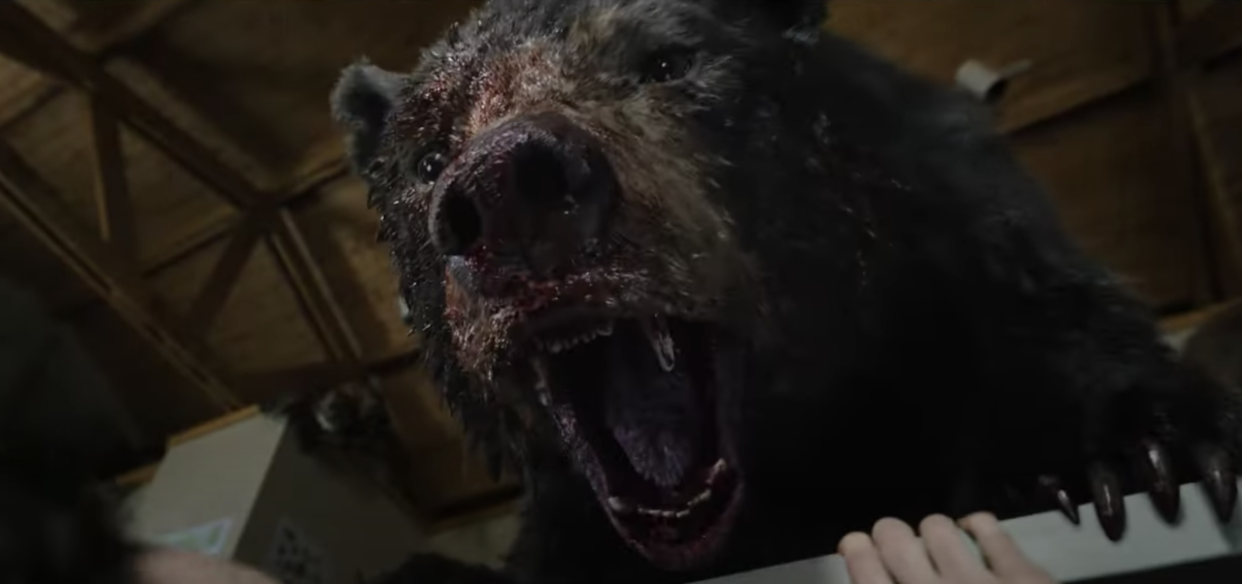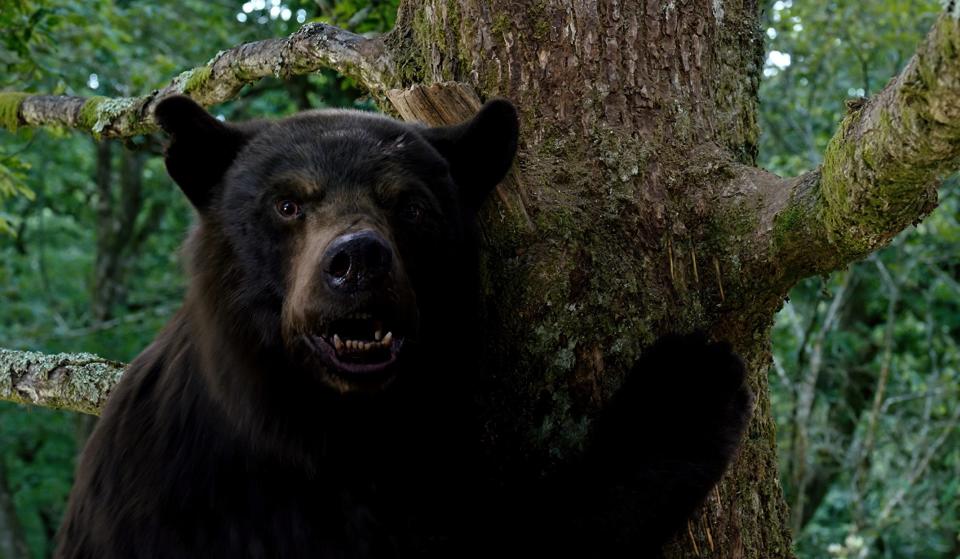Meet the Man Who Became the Titular Cocaine Bear

- Oops!Something went wrong.Please try again later.
- Oops!Something went wrong.Please try again later.
- Oops!Something went wrong.Please try again later.
A bear on cocaine? Terrifying. Only slightly less so? A buff New Zealander covered head-to-toe in black lycra, running around on all fours thanks to custom-made, meter-long aluminum limb extensions to portray a bear on cocaine. But that’s what actor Allan Henry had to do in “Cocaine Bear” to give his fellow performers — playing the humans caught in the crossfire when a bear snorts a bunch of abandoned cocaine — something tangible to react to.
Henry has augmented his work as a stunt performer and actor by embodying creature roles for a decade. “I started working with the movement coach for [the ‘Hobbit’ films] Terry Notary, who’s incredible, and the second unit for ‘The Hobbit’ was also being directed by Andy Serkis. So at the same time when we were doing orcs and goblins and things [that moved as] quadrupeds for ‘The Hobbit,’ Terry and Andy and a group of us would then go across the road to Wētā and work on the ‘Planet of the Apes’ films,” Henry told IndieWire. “That was years and years ago, and it’s kind of been a steady flow of projects that feature this kind of thing, using arm extensions and weird augmentations to your body to get the right shape and the right size and dimensions.”
More from IndieWire
Ray Liotta Had a Heritage Epiphany Filming 'Cocaine Bear' in Ireland, Says Elizabeth Banks
Think It's Totally Insane 'Cocaine Bear' Got Made? So Does Its Screenwriter Jimmy Warden
The affectionately nicknamed “Cokie the Bear” wasn’t created via motion capture in the way that people traditionally think of it. Unlike Serkis’ portrayal of Gollum in the “Lord of the Rings” and “Hobbit” films, Henry did not have tracking markers all over his face for animators to turn into digital muscle movements, but he provided a crucial reference point to create Cokie’s eyeline, physicality, and emotional state.
“I did a lot of the pre-visualization before we went to filming with [Carmelo Leggiero], who was the head animator, and he and I worked together a lot. We all have a shared vocabulary, and Carmelo is very aware of the limitations that, like, you can only push a human body so far, and then the technology has to take over,” Henry said. “I was doing motion capture for the bear once we got back and before we left. But honestly, the artists at Wētā just took the reference that I had and enhanced it and augmented what I was doing. They could see where to put the bear. But my second role was for the performers so that they had, you know, natural and organic timing and reactions and the influence and impetus from something being beside them.”

©Universal/Courtesy Everett Collection
Becoming the Cocaine Bear was a blend of the real and the unreal. While Henry watched a lot of nature documentaries to get a sense of the rhythm, breathing, and cadence of a black bear, he also discussed with director Elizabeth Banks how to bring something extra to Cokie. “There were a lot of collaborative conversations with Elizabeth, where she would have an idea about what needs to happen and what Cokie needs to do. Then we would have conversations where she’d be like, ‘But you know what? Cokie’s on cocaine, so she’s going to be faster, she’s going to be stronger, she’s going to be a little more crazy.’ So Elizabeth was trying to find ways of accentuating the power and the kind of danger of this bear so that you could see it was definitely the cocaine that was having the effect on it because you also see the moments where Cokie has small, brief moments of lucidity outside of the rush, and those are those really sweet moments,” Henry said.
But there were a lot of technically challenging moments, too, when Henry performed stunts with actors and doubles, throwing himself towards people, on top of people, and even in one sequence dancing with Alden Ehrenreich, who plays Eddie. “For that scene, Eddie’s character has to wrap his arms around the bear when she’s dancing with him, and I’m not the width of a black bear. So they gave me this ridiculous padded suit full of like foam and chunks of, like, plastic to make me the size of this bear. I looked like a kid’s toy. It was hilarious to be trying to sit down and having the chest piece just rise over my head. But Alden was great. He was very comfortable with everything, and I just lay on him, and we would like chat between takes and be like, ‘How you doing down there, buddy?'”
The experience of running on all fours and moving as a quadruped was a challenge, too. “It’s a hell of a core workout, that’s for sure,” Henry said. “The whole extension was about a meter long, but where my hand was about half a meter down, they were about 500 or 600 millimeters up. But what that means is that I can essentially be on all fours without compromising too much of my own structure, so that I can still breathe, and I still have flexibility and still have movement. It really is a full-body workout because there’s a lot of weight in my arms, and it’s going all through my arms and my shoulders into my upper back, especially in the running scenes where I have to run on the quadruped because I have to be able to plant the arm extensions in front of me and then haul my weight forward. And I’m like 95 kgs [210 lbs]. So that’s a lot to be pulling.
“Then I’m working hard on my legs to kind of stay down there and stay moving. And then, for the reference of Cokie’s snout and her head and her eyeline, I had another rig on my head, which was aluminum and the snout was silicon,” Henry added. “It was very light. But placing something that far away from your neck and attaching it is a heck of a workout for your head as well.”
Still, the rig’s intense strangeness helped frame the film’s comedic tone for Henry and the cast, including Ray Liotta and “The Americans” co-stars Margo Martindale, Matthew Rhys, and Keri Russell. “Everyone treated Elizabeth with the respect that she deserves. And likewise, when they were working with me, everyone treated me as another actor. They were like, ‘Well, you are the bear, so you are giving us the emotional performance,'” Henry said. “Everyone really bought into it and really committed to the truth of the ridiculous reality that we were in. And that was so much fun for me to play with.”
A Universal Pictures release, “Cocaine Bear” is now in theaters.
Best of IndieWire
New Movies: Release Calendar for February 24, Plus Where to Watch the Latest Films
From 'Nymphomaniac' to 'Little Ashes': Unsimulated Sex Scenes in 36 Films
Martin Scorsese's Favorite Movies: 57 Films the Director Wants You to See
Sign up for Indiewire's Newsletter. For the latest news, follow us on Facebook, Twitter, and Instagram.

